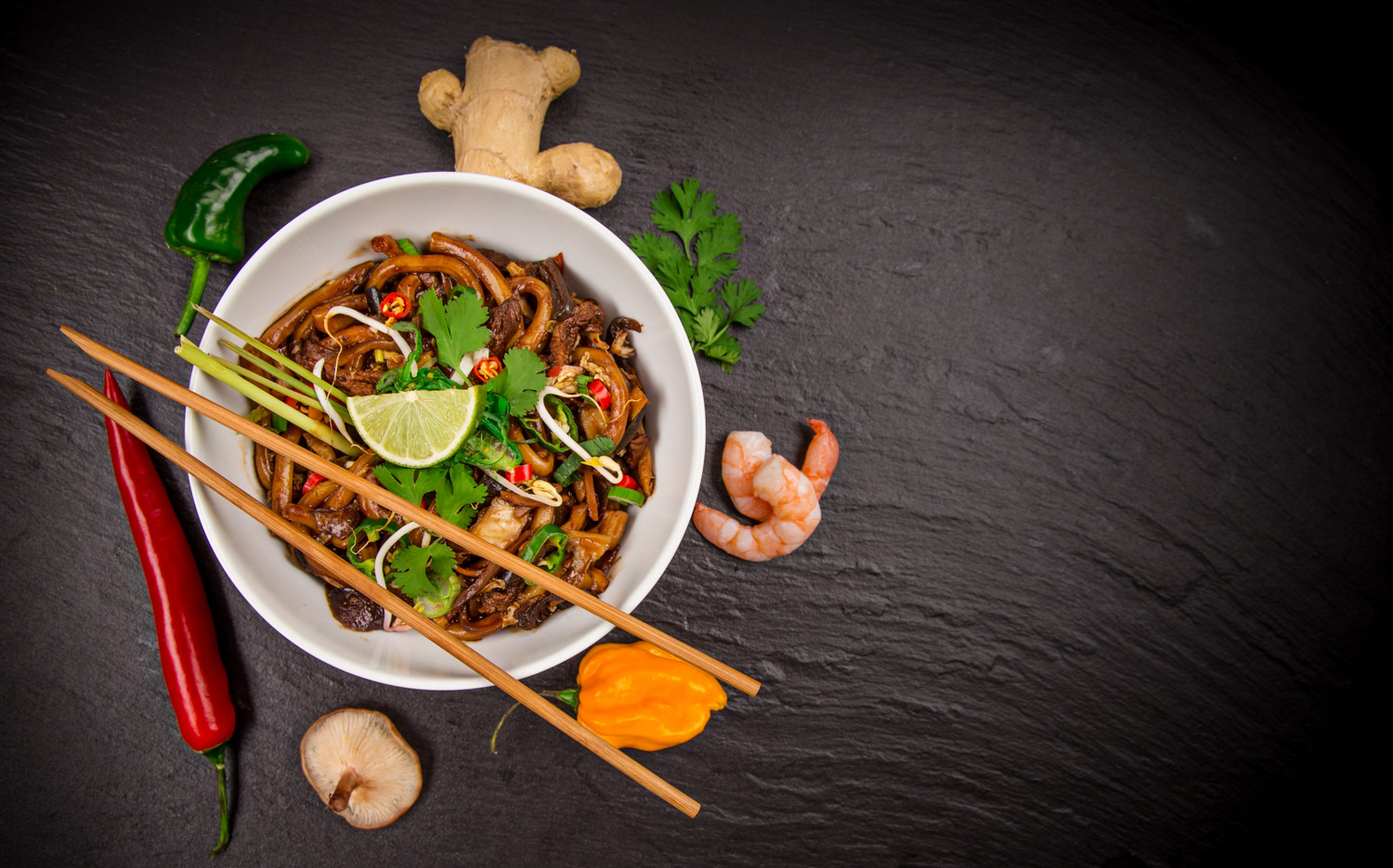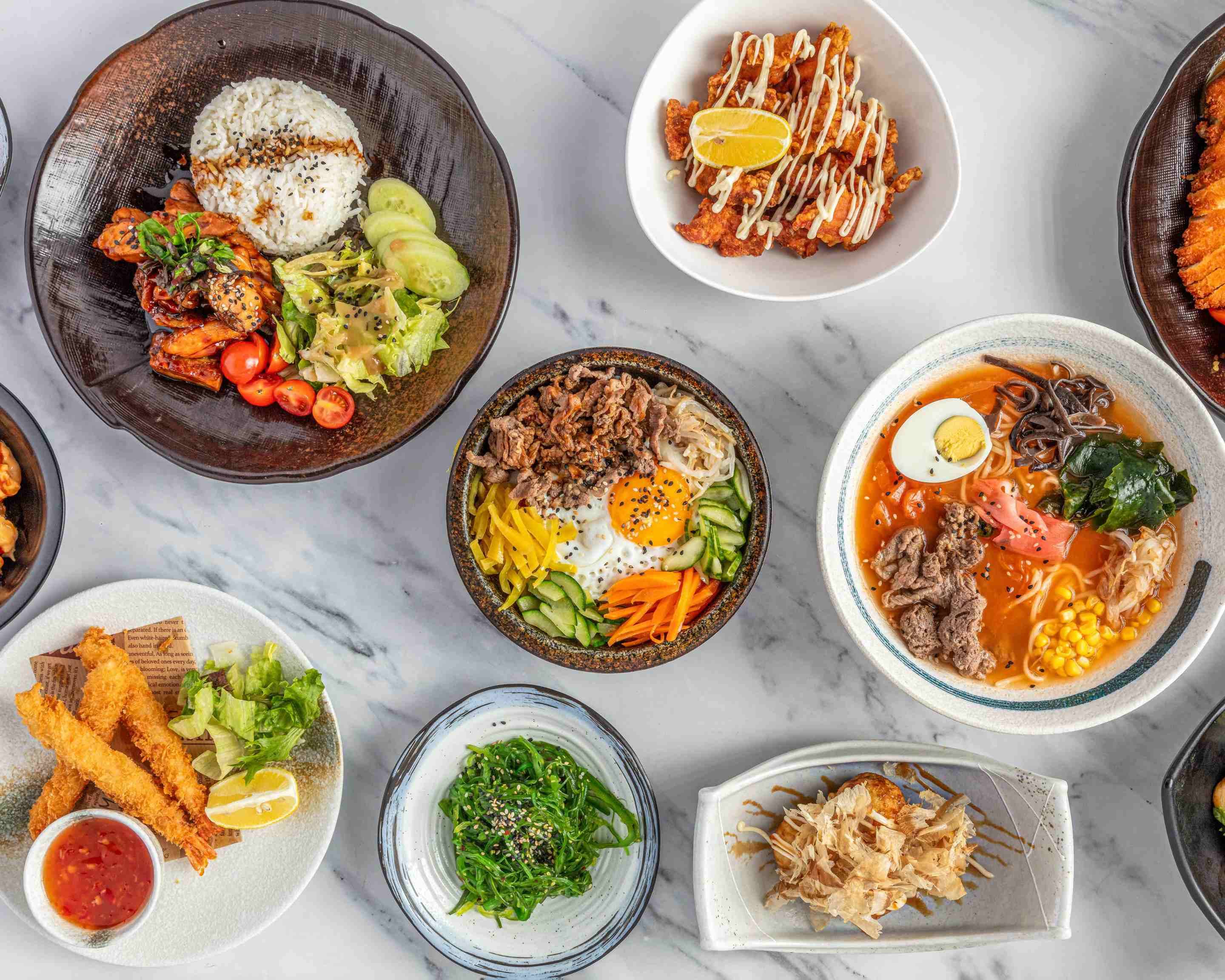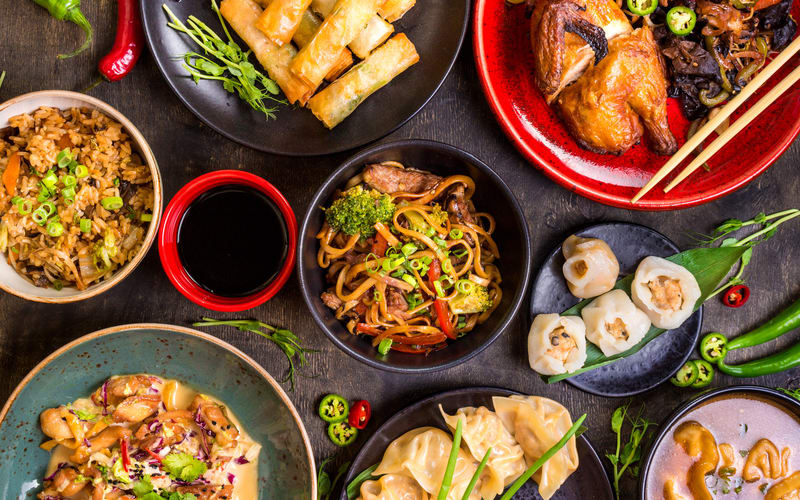Pan Asian food is a vibrant and diverse culinary landscape that encompasses the flavors and techniques of East, Southeast, and South Asia. From the delicate sushi of Japan to the aromatic curries of Thailand, this cuisine has captured the hearts and palates of food lovers worldwide.
Join us as we embark on a culinary adventure through the origins, regional variations, and modern interpretations of pan Asian food.
The history of pan Asian cuisine is a rich tapestry woven with cultural and geographical influences. From the ancient traditions of China to the vibrant street food of Vietnam, each region has contributed its unique flavors and cooking methods to the pan Asian culinary repertoire.
Ingredients and Flavors

Pan Asian cuisine is renowned for its diverse and harmonious blend of flavors, achieved through a meticulous selection of ingredients and culinary techniques. The essential ingredients and flavor profiles that define this culinary tapestry include:
Essential Ingredients
- Rice:A staple grain, rice forms the foundation of many Pan Asian dishes, providing a neutral base for bold flavors.
- Soy Sauce:A fermented sauce made from soybeans, soy sauce adds a savory umami depth to dishes.
- Ginger:A pungent and aromatic root, ginger lends a fresh and spicy kick to dishes.
- Garlic:Another aromatic ingredient, garlic imparts a savory and slightly pungent flavor.
- Chilli Peppers:Used in varying degrees of heat, chilli peppers add spice and complexity to dishes.
Flavor Profiles
- Umami:A savory and meaty flavor, umami is achieved through ingredients like soy sauce, miso, and mushrooms.
- Sweet:Sweetness is often balanced with other flavors, using ingredients such as sugar, honey, or fruit.
- Sour:Sourness adds a refreshing contrast to dishes, often provided by citrus fruits, vinegar, or fermented ingredients.
- Spicy:The heat from chilli peppers adds excitement and depth to dishes.
- Bitter:Bitter flavors, such as those found in bitter melon or certain greens, provide a unique and balancing element.
Herbs, Spices, Sauces, and Condiments
Pan Asian cuisine also boasts a wide array of herbs, spices, sauces, and condiments that further enhance the taste and aroma of dishes:
- Herbs:Cilantro, basil, mint, and lemongrass add freshness and herbaceous notes.
- Spices:Star anise, cinnamon, cumin, and turmeric add warmth, complexity, and depth of flavor.
- Sauces:Hoisin sauce, oyster sauce, and sweet and sour sauce provide rich and flavorful bases for dishes.
- Condiments:Sesame oil, Sriracha, and soy sauce add extra flavor and umami.
Examples of Flavorful Dishes
The harmonious balance of flavors in Pan Asian cooking is showcased in dishes such as:
- Pad Thai:A stir-fried noodle dish with a balance of sweet, sour, salty, and spicy flavors.
- Sichuan Beef:A spicy and aromatic dish with a complex blend of umami, heat, and sourness.
- Pho:A Vietnamese noodle soup with a rich and savory broth, featuring a combination of umami, sweetness, and herbal notes.
Cooking Techniques: Pan Asian Food
Pan Asian cuisine encompasses a diverse array of cooking techniques, each contributing to the unique textures, flavors, and presentations of its dishes.
Stir-frying is a prevalent technique where ingredients are rapidly cooked in a hot wok or skillet with minimal oil. This method results in tender-crisp textures and vibrant colors, as exemplified by dishes like Pad Thai and Kung Pao Chicken.
Steaming
Steaming involves cooking food over boiling water, preserving its natural flavors and nutrients. Dim sum and steamed fish are prime examples showcasing the delicacy and finesse of this technique.
Grilling, Pan asian food
Grilling imparts a smoky, charred flavor to dishes. Satay and yakitori are popular grilled delicacies, often marinated in flavorful sauces.
Deep-Frying
Deep-frying creates crispy exteriors and tender interiors. Tempura and spring rolls are iconic examples of dishes that showcase the mastery of this technique.
Health Benefits
Pan Asian cuisine emphasizes the use of fresh, unprocessed ingredients, lean proteins, and whole grains, making it a healthy and balanced choice.
Nutritious Ingredients and Cooking Methods
Many Pan Asian dishes incorporate nutrient-rich vegetables such as bok choy, spinach, and carrots. Lean proteins like tofu, chicken, and fish provide essential amino acids without excessive saturated fat. Whole grains like brown rice and quinoa offer fiber and complex carbohydrates for sustained energy.Examples
of nutritious dishes include:
- Steamed fish with ginger and scallions (low-fat protein, anti-inflammatory ginger)
- Stir-fried vegetables with brown rice (fiber-rich vegetables, whole grains)
- Miso soup (fermented soybeans, probiotic benefits)
Cultural Significance

Pan Asian cuisine holds immense cultural significance across various societies, deeply intertwined with traditions, festivals, and social gatherings.
In many Asian countries, food plays a central role in religious ceremonies and cultural celebrations. For example, during the Chinese Lunar New Year, families gather for feasts featuring dishes such as dumplings and spring rolls, symbolizing prosperity and good fortune.
Food Traditions and Festivals
Pan Asian cuisine is integral to food traditions and festivals that have been passed down through generations. In Japan, the tea ceremony is a highly ritualized practice where green tea is prepared and served in a specific manner, reflecting cultural values of harmony and respect.
Social Gatherings
Pan Asian dishes are often shared during social gatherings, fostering a sense of community and togetherness. In Korea, sharing a meal of barbecue is a popular way to celebrate special occasions and connect with loved ones.
Cultural Exchange and Understanding
Pan Asian cuisine has played a significant role in promoting cultural exchange and understanding. Through the sharing of food, people from different cultures can experience and appreciate the diverse flavors and traditions of Asia. This culinary exchange contributes to breaking down barriers and fostering greater global understanding.
Modern Interpretations

In the contemporary culinary landscape, Pan Asian cuisine has undergone a remarkable transformation, with chefs and restaurants worldwide embracing its vibrant flavors and techniques. This culinary evolution has resulted in a myriad of modern interpretations that have captured the imagination of food enthusiasts globally.
One notable trend is the fusion of Pan Asian flavors with other culinary traditions. Chefs have ingeniously blended elements of Asian cuisine with Western, European, and even South American ingredients and cooking methods. This cross-cultural pollination has given rise to innovative dishes that showcase the versatility and adaptability of Pan Asian flavors.
Fusion with Western Cuisine
- Pan-seared Foie Gras with Hoisin Glaze:A classic French delicacy infused with the sweet and savory flavors of Chinese hoisin sauce.
- Duck Confit with Asian Spices:French duck confit seasoned with a tantalizing blend of Asian spices, creating a harmonious balance of flavors.
- Lobster Risotto with Ginger and Soy:A luxurious combination of Italian risotto cooked in a delicate broth infused with ginger and soy sauce, offering a unique twist on the traditional dish.
Essential FAQs
What are the key ingredients used in pan Asian cuisine?
Pan Asian cuisine is known for its use of fresh ingredients such as rice, noodles, vegetables, and lean proteins. Soy sauce, fish sauce, and a variety of herbs and spices are commonly used to enhance flavors.
How does pan Asian cuisine differ from other Asian cuisines?
Pan Asian cuisine encompasses a wide range of regional variations, each with its unique flavors and cooking techniques. It differs from other Asian cuisines by its emphasis on fresh ingredients, balanced flavors, and the use of various cooking methods such as stir-frying, steaming, and grilling.
